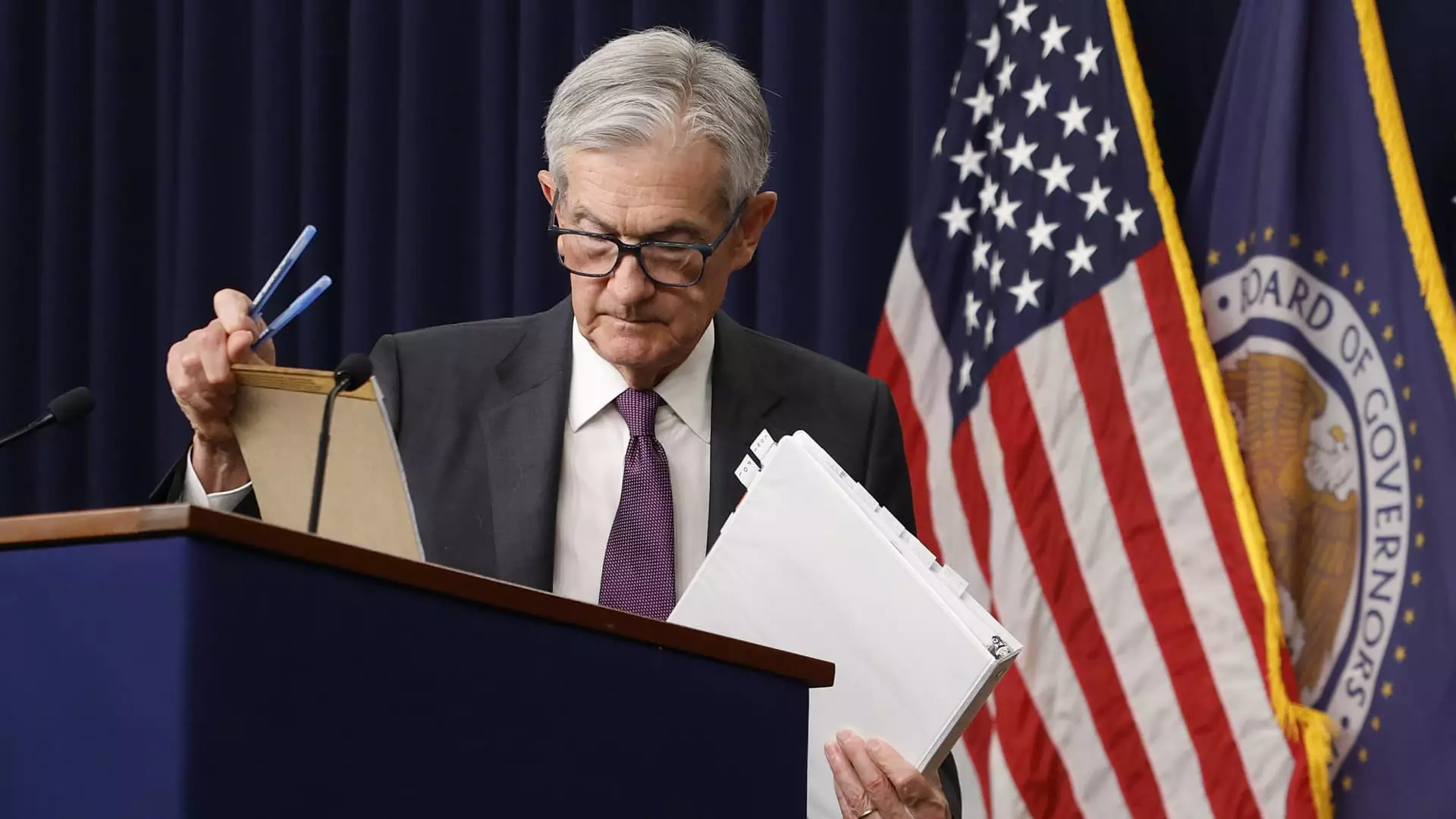In a rather foreboding address, Federal Reserve Chair Jerome Powell articulated the precarious balancing act that the central bank currently faces. The dual mandate of the Federal Reserve—maintaining maximum employment while stabilizing prices—is more fraught than ever. Powell acknowledged that we might soon find ourselves in a situation where these goals clash, exacerbated by external pressures such as President Trump’s tariffs. As Powell stated, “We may find ourselves in the challenging scenario in which our dual-mandate goals are in tension.” This stark admission raises the question: how could such a dichotomy undermine the essential stability that both inflation and employment traditionally provide to a healthy economy? Powell’s hesitance to specify a course of action suggests an underlying uncertainty in the Fed’s approach, one that is frustrating for markets that crave decisiveness.
Tariffs: The Sleeper Agent of Inflation
One of the most concerning aspects of Powell’s speech was the acknowledgment of tariffs as a destabilizing force for both inflation and growth. Tariffs, while intended as a protective economic strategy, often act as a tax on consumers and can drive prices skyward. As Powell noted, “Tariffs are highly likely to generate at least a temporary rise in inflation.” This statement underscores the possible long-term implications of current trade policy. Expectations of a steady rise in prices could become entrenched, creating a self-fulfilling prophecy that economists dread. The nuanced relationship between tariffs and inflation highlights a crucial point: while their effects on pricing can be unpredictable, the potential for a persistent inflation problem is tangible. The notion that tariffs are seen as “a one-time hit to prices” may need urgent reappraisal given present conditions.
The Forecast: A Cloudy Economic Horizon
Much of Powell’s remarks hinged on an economic forecast that seems begrudgingly tinged with pessimism. Citing expected stagnation in GDP growth for the first quarter, where predictions hover around a dismal -0.1%, one must wonder how deeply these numbers will reverberate through the economy. Powell himself noted that “the data in hand so far suggest that growth has slowed.” When economic growth essentially grinds to a halt, it not only puts the Fed’s goals at risk, but it also exposes the broader vulnerabilities of an economy heavily reliant on consumer spending. Indeed, while certain sectors, like motor vehicle sales, may show temporary boosts in anticipation of tariffs, these spikes often mask more troubling undercurrents.
The Peculiar Role of Interest Rates
Powell’s mention of interest rates was notably vague, a concern that leaves many market analysts scratching their heads. With inflation on the rise and growth lagging, the Fed seems poised to make policy shifts, yet Powell offered no concrete indicators on what those might entail. Their current latitude does afford some room to maneuver, but markets are notoriously impatient and thrive on clarity. The crucial balance between keeping rates steady to tame inflation while entertaining possible cuts to stimulate a sluggish economy raises larger questions about the Fed’s agency. If inflation expectations spiral out of control, how flexible will the Fed truly be? This deliberation could not only dictate the economic landscape but may also set the stage for a protracted period of instability.
The Influence of Market Sentiments
The immediate market reaction to Powell’s speech was revealing. Stocks fell, and Treasury yields dipped, signaling that investors are not only anxious but increasingly skeptical about the Fed’s future actions. Such volatility underscores the powerful impact of central bank communications. Powell’s reluctance to present a clear stance on interest rates or growth projections only amplifies that uncertainty. The market thrives on confidence—a shaky narrative can flip investment sentiments in a heartbeat. As Powell recognized the need to maintain inflation expectations, one cannot help but wonder whether the Fed’s credibility is at stake here. Will the confidence in America’s economic fabric remain intact, or will tariff-induced prices strangle consumer sentiment and spending?
A Call for Proactive Solutions
In light of Powell’s remarks, it becomes apparent that the Federal Reserve is navigating uncharted waters fueled by ongoing trade disputes, fluctuating inflation rates, and fluctuating economic projections. The stakes are high. Policymakers must embrace a more proactive stance rather than remaining passive on the sidelines, especially in a time ripe with uncertainty. If proactive measures are not taken, the delicate balance between controlling inflation and supporting sustainable economic growth may ultimately fracture. As these economic realities converge, the necessity for thoughtful and bold interventions is paramount. We cannot afford to let the specter of uncertainty dictate our future. The choices made now will echo through the economy for years to come, and it remains to be seen whether those choices will lead us toward stability or further turmoil.


Leave a Reply